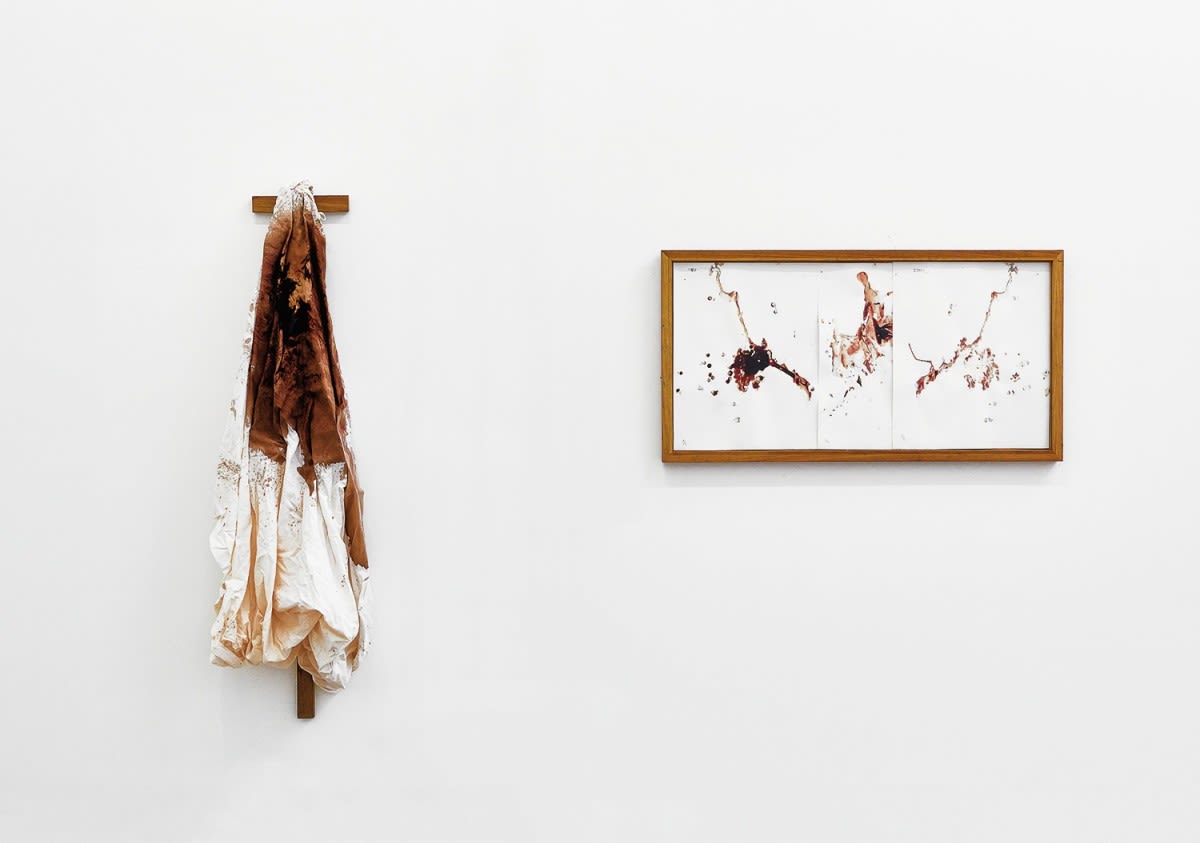Karin Lambrecht Brazilian, b. 1957
Animal, 2004
Sheep’s blood on white sheet and paper
67 x 126 cms
26 3/8 x 49 5/8 inches
170 x 50 cms
66 7/8 x 19 3/4 inches
26 3/8 x 49 5/8 inches
170 x 50 cms
66 7/8 x 19 3/4 inches
Lambrecht’s exploration of alternative, natural pigments in her work is best demonstrated by a series of works with blood, or ‘registros de sangue’ (records of blood). Between 1997 and 2008,...
Lambrecht’s exploration of alternative, natural pigments in her work is best demonstrated by a series of works with blood, or ‘registros de sangue’ (records of blood). Between 1997 and 2008, Lambrecht witnessed or participated in the process of the killing of sheep in various countries ranging from Brazil, Chile and Uruguay to Israel. She would use the blood of the sheep to stain fabric as a record or memory of the process of the death. She would also take dissected parts of the sheep’s anatomy and place them onto paper in order to leave an imprint. The result would be a stain or a smear that was then labelled with the name of the body part that created it; these works serve as a record of presence followed by absence, life followed swiftly by death.
'The starting point for this series of works was the artist’s contact with a man from the Brazilian backcountry who slaughters sheep for a living in an area near the city of Bagé, in southern Brazil’s Rio Grande do Sul state. Neither priest nor butcher, this man attaches no religious connotation to his labor, although he does take several steps that in practice liken his process to a ritual. So much so that the artist had to prove the seriousness of her intentions before she was allowed to witness the sacrifice. Later on, she and a group of friends she invited along watched as the animal was hanged and bled to death, in accordance with Jewish rite.'
Excerpt from a text written by Agnaldo Farias in the catalogue for the 25th São Paulo Art Biennial
'The starting point for this series of works was the artist’s contact with a man from the Brazilian backcountry who slaughters sheep for a living in an area near the city of Bagé, in southern Brazil’s Rio Grande do Sul state. Neither priest nor butcher, this man attaches no religious connotation to his labor, although he does take several steps that in practice liken his process to a ritual. So much so that the artist had to prove the seriousness of her intentions before she was allowed to witness the sacrifice. Later on, she and a group of friends she invited along watched as the animal was hanged and bled to death, in accordance with Jewish rite.'
Excerpt from a text written by Agnaldo Farias in the catalogue for the 25th São Paulo Art Biennial
